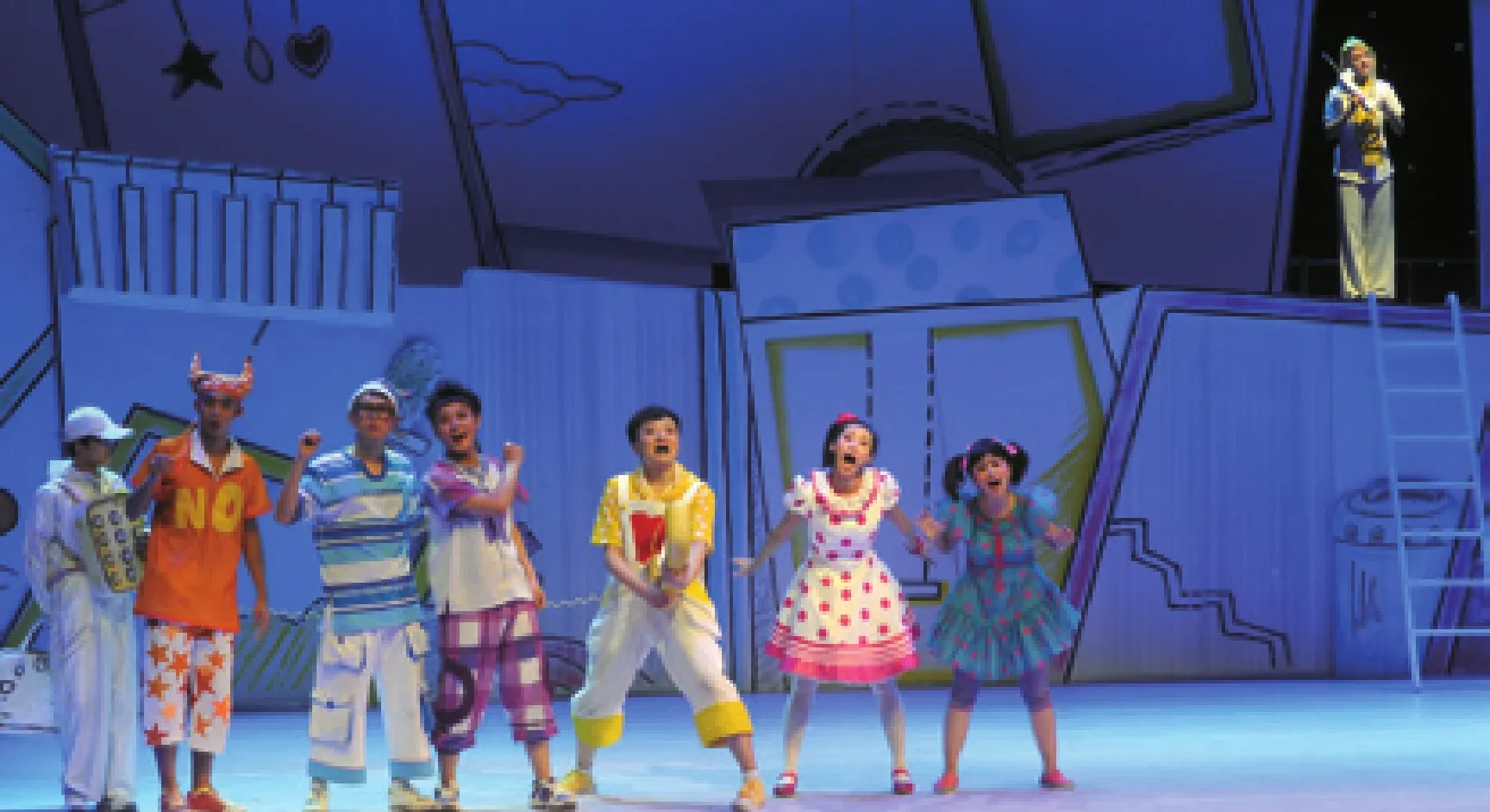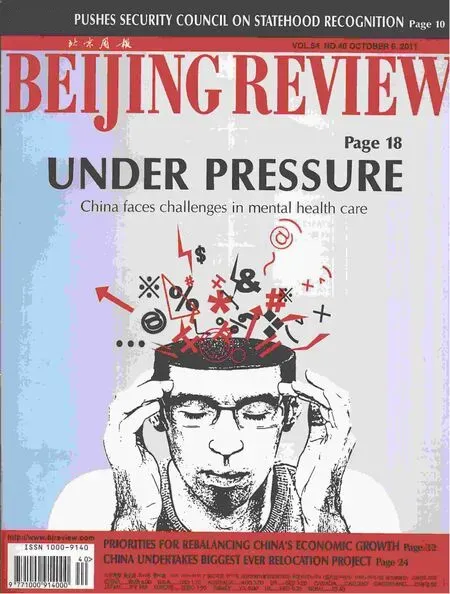A Feast of Theater
By BAI SHI
A Feast of Theater
By BAI SHI
Nine state-run theaters and orchestras offer a feast of select plays and operas
For one month between August and September, stages across Beijing were filled with performances of plays and operas sponsored by China’s Ministry of Culture. The 65 performances, offered by nine of China’s state-owned theaters and orchestras, showcased new achievements of state-run theaters and enriched people’s cultural lives.
Past decades have seen these nine organizations evolve from non-pro fi t to profitable business entities, creating a number of popular works, such as the classic operaThe White Haired Girl, and cultivating a number of outstanding artists. They have all adopted a corporate structure for new vitality and pro fi tability, as required by the Central Government in 2005.
“These performances will help these theaters and orchestras flourish in a market economy, while showing the fruits of theater creation and artist training during their institutional reform,” said Dong Wei, Director of Department of Arts of the Ministry of Culture.
New and improved
A new generation of performers is being cultivated to preserve traditional art forms and spark public interest with innovations.
Young performers took leading roles in many of these performances and offered the audiences a new experience through their creative interpretation, such as the operaThe Red Lanternproduced by the National Peking Opera, and the dramaFour Generations Under One Roofproduced by the National Theater of China.
“We chose 26 young performers through a recruitment process, offering them an opportunity to perform with famous artists. Therefore, young performers account for four-fifths of the whole cast,” said Liu Tiegang, a dramatist with the National Theater of China and the producer ofWen Cang Mang, a realist drama about the lives of immigrants in cities.
The National Ballet of China held an exclusive performance to show their pioneering art and dance for audiences.
“During the fi ve-year history of our ballet workshop, I was often moved by the passion and insistence of young artists. The performance event is a good opportunity to better show their creative ideas,” said Jiang Shan, a producer with the National Ballet of China.
Half of these performances were unveiled for the fi rst time during the event.
New vitality
The nine state-run theaters and orchestras have played a leading role in promoting the prosperity of China’s performing arts.The institutional reform, which transformed them from non-pro fi t organizations to business entities, has invigorated them to seize opportunities for growing stronger in a market economy.
China Oriental Performing Arts Group(China Oriental) was the first state-owned theater to restructure in 2009.
“We have made glorious achievements over the last 50 years. But we cannot rely on the past honors any longer. More important for us is to create new theater works that meet the multi-cultural demands of people,”said China Oriental’s Chairman Gu Xin on September 14.
“Prior to the reform, we could stage few performances a year and it was a huge waste of talent and resources. In contrast, the restructured group is now able to mobilize all its performers,thanks to its better payment and market-oriented operation,” Gu said.
China Oriental has staged a growing number of performances in recent years. It offered 400 shows last year and its revenue this year is expected to reach 150 million yuan ($23.45 million).
In addition to performances, a series of seminars, trade fairs and exhibitions were held for the event.
An exhibition opened on September 9 to show the history of the nine companies’ performances and their communications with foreign theaters and professionals, and a fair kicked off on September 15 to promote their works. Contracts for 571 of their plays and performances were inked at the fair. In addition, a forum was held for the theaters and artists to discuss how to get Chinese works of performing art to overseas stages.

RATED G: China Children’s Art Theater staged the play Absolute Kids,adapted from cartoonist Zhu Deyong’s comic of the same name, for children in Beijing on September 17

